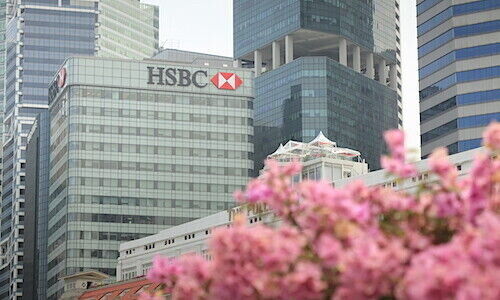Before the pandemic, dense, highly urbanized cities marked by the world’s tallest skyscrapers were signs of unfettered, ascendent regional economic progress. Now, something strange seems to be happening. finews.asia takes a look.
When it comes to tall buildings, you can love or hate them, but one thing is for sure. The financial centers of Asia are invested.
Data from the Visual Capitalist make that crystal clear. Asia cities comprise eight of the top ten cities worldwide with the highest number of skyscrapers, with the only entrants outside the region being New York, which placed third followed by Dubai in fourth.
Hong Kong still leads the world with 657 buildings that are over 150 meters tall, but it falls down the ranks when it comes to the so-called «supertalls», or those over 300 meters. Here Dubai comes first with 28 but neighboring Shenzhen across the border on the mainland puts in an impressive showing with 16, the same number as New York.
Compressed Urbanity
Going down the list of the top 25, however, is like looking at a list of key regional financial and economic centers. Guangzhou is fifth and Shanghai sixth, and after that comes Kuala Lumpur, Chongqing, Tokyo, and Wuhan.
They are followed by Jakarta, Chengdu, Bangkok, Shenyang, Singapore, Nanning, Mumbai, Tianjin and Nanjing, Busan, Seoul, Changsha, and Melbourne.
China alone has 12 cities in the top 25. You can say what you will, but the region has bought into the concept of the tall building hook, line, and sinker.
No Tall Buildings
With all this, you can almost relate to the average Asian employee after they return to Hong Kong or Singapore lamenting the total lack of any tall buildings worth speaking about after traveling on business to a quaint Zurich or Geneva.
Even with an extended explanation, they might display precious little understanding of the general European penchant to limit the upwards growth of their skylines in order to protect historic buildings and their old towns. Why and for what, they might ask.
But we are now in the post-pandemic era. China has also faced a painful real estate crisis and things may have come full circle.
Productivity and Space
You can say what you want, but tall buildings were not conceived to protect anyone from infection. They were instead built to be packed full of humanity in open-plan offices, helping productivity while saving space - something that has since been somewhat questioned («Scientific American», April).
A Schroders talking point released Tuesday to the media about the real estate market encapsulated the current situation. Investment in Asia Pacific real estate in the first quarter has fallen to its lowest level since 2010.
«The office sector is still under pressure, partly due to high supply,» it indicated.
Less Affected
The bank did expect things to pick up along with an expected post-pandemic recovery but that this will be less of a support than it was during the 2008 global financial crisis.
«Besides Australia, office markets in developed APAC have been less affected by home working than most western markets,» Schroders maintained.
That view on remote work seems to be echoed by a news release, also on Tuesday, from Hong Kong-based insurer QBE. They indicated that 63 percent of small and medium-sized businesses in the city expect workers to work solely from their offices, up from 51 percent a year ago.
Ignoring the Market
But all of that may simply be echoing the conventional wisdom from the current crop of business management while ignoring what the market is really trying to tell us.
A recent «Bloomberg» report (paywall) provides anecdotal – and completely – different context. They maintain that Hong Kong’s office towers have never been this empty, with renowned billionaire Li Ka-Shing’s Cheung Kong building in Central a quarter vacant (the news and information service is likely to know given their offices are located there).
Moreover, according to them, another new building being put up by the same billionaire just across the street has exactly one tenant.
Only Go Up
What everyone seems to be forgetting in all of this is that it was completely and utterly unimaginable five years ago. At that time, property prices and rents in Asia, and Hong Kong, could only go up. You would be looked at funny if you even tried to maintain otherwise.
And, yes, as Bloomberg and many economists maintain, there appear to be many rational reasons for the current downturn in the Hong Kong market.
At the same time, larger forces that we can't yet fully understand might be at play. We could be seeing an inflection point, with many instinctively simply starting to question the typical Asia-based model of high-rise offices and apartments linked up to mass transit stations and malls. Still, only time will tell.






















